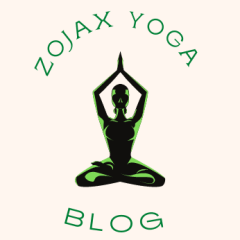What is yoga pose Headstand (Sirasana)?
Headstand ( Sirasana) is known as the “king of all yoga poses” in ancient yogic texts.
There are several reasons for this, the most important of which is the asana’s complete and balancing effect on the body, spirit, mind, and emotions. The body’s reversal position in this asana has a powerful effect on the bloodstream: stagnant venous blood flows out of the legs, blood stalls in the internal organs vanish, and brain cells are flooded with fresh arterial blood. Headstand (Sirsasana) deepens breathing, improves spinal statics, which leads to appropriate posture, and impacts the senses—improves vision and hearing…
Regular practice of this excellent asana reduces stress and anxiety, and expands spiritual dimensions.

Computer photo created by jcomp – www.freepik.com
Step by step
1. We take a seat in Vajrasan, or “lightning” pose.
In front of our knees, we place a thinly folded blanket on the ground.
2. Grab the opposite elbows with your forearms crossed.
Our forearms are lowered on the blanket while we tilt our torso forward a little.
We secure the elbows to the ground and ensure that the gap between them does not exceed the shoulder width.
Our forearms are stretched and twisted firmly, and our fingers are ‘locked,’ but not rigid.
3. We place the full head between the fists so that the back of the head (nape) meets the combined palms, lowering the top of the head (threads) on the blanket.
Let’s double-check that only the top of the head, not the forehead or nape, is resting on the ground.
In the final pose, check to see if your body weight is resting on your scalp rather than the front or rear of your head.
Otherwise, we will put undue strain on the neck or eyes, causing the spine to bend, while it should be straight and stretched in this position.
We make sure the little fingers on our hands contact the back of the head, but not beneath it.Consolidate the pose of the head and breathe calmly and evenly for a few seconds in this yoga pose.
4.Bend your toes, then lift and straighten your knees. We walk with our fingers forward, towards the head, until the torso is vertical in relation to the ground.
5. In the exhale, bend your knees and bring them closer to your chest. Then we press the toes and the area below them firmly on the ground and push off, lifting both feet off the ground. We bring the knees to the chest, and the heels as close to the buttocks as possible. * Inexperienced practitioners start practicing this asana by initially practicing against a wall until they have mastered maintaining balance on the head.
6.We press the elbows to the ground and raise the shoulders as high as possible, stretch and spread them, and fasten the shoulder blades to the back and pull towards the tailbone. Note that the weight of the shoulders does not fall on the neck. With the exhale, slowly separate the knees from the chest and lift them until the thighs are parallel to the ground. In this position, the entire upper part of the body, from the head to the waist and hips, should be vertical in relation to the ground. Fix your elbows and do not move them until you come out of the final pose.
7. We continue to raise our knees, directing them towards the ceiling until the thighs reach a vertical position. The lower legs are bent back, we keep the heels close to the buttocks. Tighten the buttocks, keep the spine straight, shoulders raised. We calm down and breathe a few cycles of breath in this pose.
8.We straighten the knees and raise the lower legs in line with the thighs. We completely stretch and stretch the outer and inner edges of the legs, directing the toes towards the ceiling. Tighten the knees by gently pulling the cups, connect the thighs, knees, feet; we pull the abdominal muscles inside to lengthen the lower part of the spine. Stretch the spine from the neck to the tailbone. The whole body is vertical while we balance on the top of the head, not on the forearms and elbows—they only provide stability to the body and help maintain balance. * While holding the position, pay attention to the correct posture of the torso and legs and to their alignment. Be careful not to lean to one side or the other, forward or backward. We ensure stability in the position by stretching the upper part of the spine and the chest itself and by lifting the shoulders away from the ground.
9.We stay in the final position for 1–5 minutes, breathing calmly and evenly. We consciously relax the whole body, from the toes all the way to the scalp.
10.We get out of standing on our heads by first bending our knees and then lowering them down in the reverse order of entering them. We sit on the sheets and heels, lower the torso to the thighs, forehead to the ground and rest a few cycles of breath in the ‘rabbit’ position, Shasankasane, with arms outstretched in front of the body or ‘child position’, Balasani, with arms next to the torso. With a breath, we sit in Vajrasan.

Image by Freepik
Notes:
- Inexperienced exercisers start with this asana by practicing it against a wall or even better in a corner of the room so that the walls that form a right angle touch the shoulders, hips and the outer sides of the heel. In that way, we can be sure that our body is symmetrical in this asana and that we perform it correctly, which is not the case if we practice it against a flat wall. Namely, then there can be tilting and bending of the body to the side that is stronger for us without noticing it, and thus not correcting it. That is why it is more recommended to practice standing on your head in the corner of the room until we master it.
- Place the folded blanket in a corner or against a wall. We follow points 1-4 previously described. Pay attention to placing the twisted fingers 5-8 cm from the wall/walls. If the distance is greater, the spine will bend, and the abdomen will bulge. In that case, the weight of the body will fall on the elbows, and the position of the head can change, which causes eye strain and insufficient relaxation of the body in position.
- When we have straightened the torso, walking with our toes towards it, we lean our hips against the wall/sides of the walls, bend our knees, and, with exhale, swing and lift one leg and the other (or both at the same time) against the wall/walls so that our feet rest on him/them. In this position, the hips and feet touch the wall or walls. We adjust the position of the body, press the elbows on the ground, stretch the upper arms, armpits and the whole torso all the way to the waist. Raise your shoulders, tighten your shoulder blades. Then straighten the legs, one after the other or both at the same time, so that now the hips, legs, and heels touch the wall/opp. walls. Slowly and gradually we practice to first separate the hips, and then the legs from the wall, straighten the whole body and balance on the scalp, slightly leaning on the elbows and forearms. When we want to get out of position, we lean our hips and legs against the wall again, bend our knees, lower our heels to the buttocks and slowly lower our knees and feet to the ground. Let’s rest for a few minutes in Shashankasana or Balasana.
- Experienced advanced practitioners enter Sirsasana with straight legs.
We follow points 1-4 described in the rules of performing asanas.
- Keep your legs straight, outstretched, press your heels to the ground, stretch your chest and middle part of the spine and stay in this position for about 30 seconds, breathing evenly.
- With the exhale, lift the heels and toes off the ground, moving the hips back. Raise both legs at the same time in a position parallel to the ground, fasten them, keep them connected. We press our elbows, lift our shoulders away from the ground. We stay in this pose for about 10 seconds, breathing normally.
- With an exhale, slowly raise your legs to a vertical position. We stay in Sirsasana for 1-5 minutes, breathing evenly and calmly.
- We get out of the stand with our legs straight, in the reverse order of entering it, gradually lowering our legs. We rest our feet on the ground, bend our knees and lower ourselves into the ‘rabbit’ pose.
Therapeutic benefit of Headstand (Sirsasana)
- asthma
- infertility
- insomnia
- sinusitis
Benefits of Headstand (Sirsasana)
- strengthens the whole body, will and endurance
- calms the brain,
- helps relieve stress and mild depression stimulates the pituitary and pineal glands strengthens arms, legs, spine
- stronger lungs
- tones the internal organs
- improves digestion
- relieves menopausal symptoms
- improves memory, vision, concentration
- relieves insomnia
- increases the concentration of hemoglobin in the blood
- relieves symptoms of colds, coughs, tonsillitis
Contraindications, warnings and precautions:
- Heart disease
- High blood pressure, spinal injuries, spondylosis in the cervical spine, back pain
- Headache, migraine
- We do not start training with this asana if we have low blood pressure.
- We perform a headstand only once during training.
- We do not repeat it because it can lead to fatigue and exhaustion of the body.
- We avoid practicing this asana during menstruation. We can continue to practice this asana during pregnancy, but only if we have a lot of experience,we do not do it.
FAQ PAGE about Headstand (Sirsasana)
What is Headstand pose in yoga?
Headstand pose, also known as Sirsasana, is an inverted yoga posture that involves balancing on the head and forearms while the legs are extended upwards. It is considered an advanced pose and requires a lot of strength, balance, and practice to master.
What are the benefits of Headstand pose?
Headstand pose has many benefits for both the body and mind. It can help improve circulation, reduce stress and anxiety, strengthen the core and upper body muscles, and improve balance and focus.
How do I do Headstand pose safely?
To do Headstand pose safely, it is important to have proper alignment and technique. It is recommended to practice under the guidance of a qualified yoga teacher who can help you learn the correct form and avoid injury.



